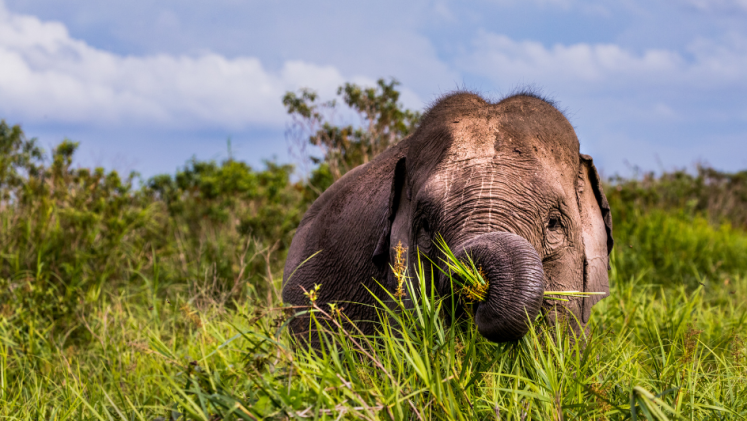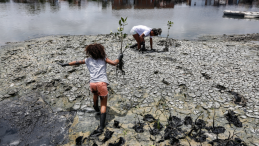As humanity becomes increasingly connected across the planet, so do the risks we share. The Interconnected Risks report 2021/22 shows that there are underlying causes that not only connect disasters, but also the solutions to manage them. When looking at how this can help protect biodiversity, we zoom in on the interconnectivity of two case studies: the wandering elephants and the vanishing vaquita.
Species are pushed from their habitats or towards extinction
The migration of a herd of 15 Asian elephants that left their home in Xishuangbanna National Nature Reserve was likely linked to a drought that affected the region in March 2020. The vanishing vaquita case study focuses on this species of porpoise on the brink of extinction with less than 10 individuals estimated to be left in the wild. These last vaquitas can only be found on the northern end of the Gulf of California, after the species heavily suffered from unsustainable fishing strategies and practices.
The wandering elephants and vanishing vaquita disasters have shared root causes
Shared root causes illustrate how seemingly unrelated events link back to the same sources but reveal themselves differently. In this case, shared root causes can be traced back to global demand pressures and the undervaluing of environmental costs where the pursuit of economic interests lacks consideration for environmental impacts. In the vaquita case for example, the vaquita is not commercially targeted, but collateral damage in an ongoing conflict between fishers, government and international illegal trade.
While oceans apart, both disasters cause livelihood loss for the communities involved
The push for implementation of alternative fishing gear to aid in conservation efforts of the vaquita is predicted to put pressure on local fishers and their livelihoods, by reducing economic viability while incentivizing increased illegal gillnet fishing. Along their journey, the wandering elephants damaged buildings and infrastructure and destroyed crops, totaling estimated damage of over $1 million.
Innovation mitigates risk
By using preventive techniques that are both effective and beneficial to farmers, damage caused by wandering elephants can be substantially reduced. For example, beehive fences have been used in Kenya to deter elephants from cropland while providing honey and improving crop pollination. For the vaquita case, sustainable fishing gear is designed to reduce bycatch by being more efficient with the area being fished and deterring or obstructing non-target species.
Collaboration among stakeholders is key in reducing human-elephant conflict as well as in the survival of the vaquita
Involving local communities in conservation plans is critical to creating viable and sustainable solutions for wildlife conservation. For instance, integrating traditional farming into protected natural areas can make elephant habitat larger and safer from confrontation with humans, while meeting villagers’ needs and managing land sustainably. Similarly, research indicated that improving the governance of fisheries to factor in social well-being through the direct involvement of fishing communities might be the most essential element for the successful conservation of the vaquita.




